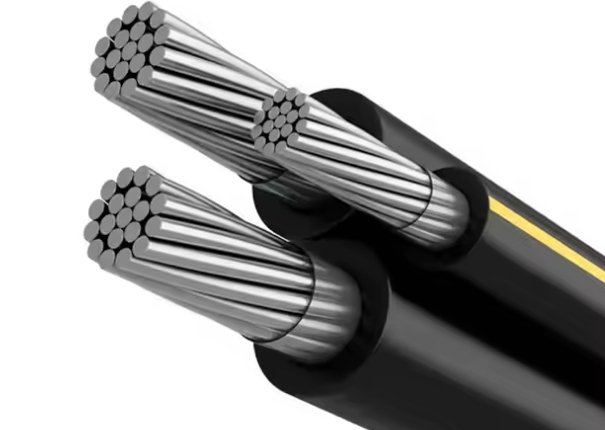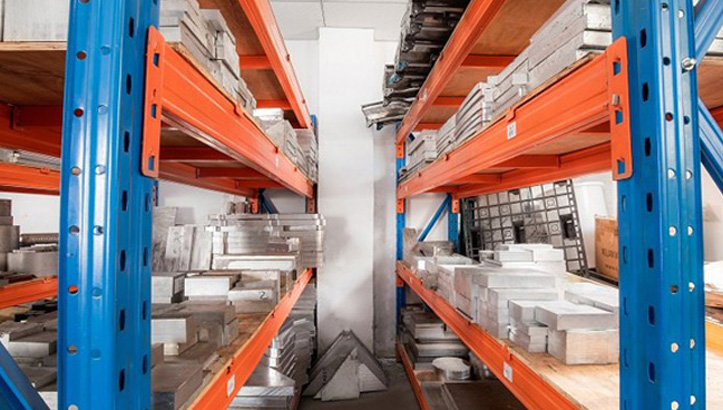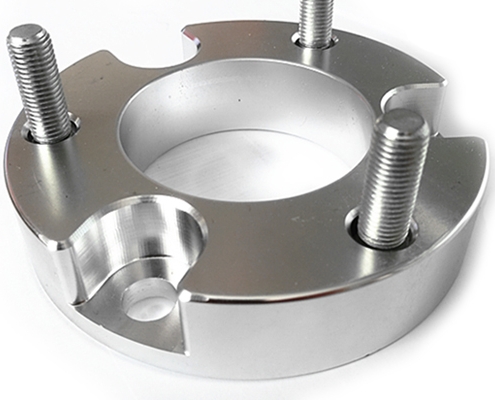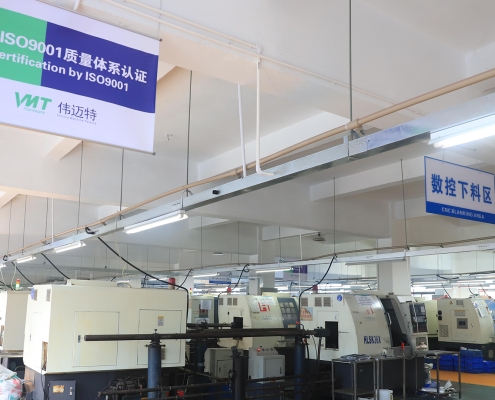The Electrical Conductivity of Aluminum: A Comprehensive Guide
Finding the right material for electrical conductivity can be a daunting task. Aluminum stands out for its cost-efficiency, lightweight nature, and excellent performance in various applications.
Aluminum, known for being lightweight and versatile, is one of the most electrically conductive elements used in industrial applications. It delivers excellent performance in a wide range of industries due to its outstanding combination of electrical conductivity and mechanical properties. Let’s explore the characteristics that make aluminum a top choice for electrical applications and its relevance in CNC machining.
What is Electrical Conductivity?
Electrical conductivity is the ability of a material to allow the flow of electric current. Materials like aluminum are highly valued in engineering because they conduct electricity effectively. Among the list of conductivities of metals, aluminum ranks high due to its low resistivity and lightweight properties.
The electrical resistivity of aluminum is measured at 2.65 × 10⁻⁸ ohm·m, making it one of the most metals that can conduct electricity efficiently. While it’s not as conductive as copper, its performance-to-cost ratio makes it a practical choice.

How Does Aluminium Conduct Electricity?
Aluminium conducts electricity primarily through the movement of free electrons within its atomic structure. Like other metals, aluminium has a crystalline lattice in which valence electrons are not tightly bound to individual atoms. These free electrons can move easily throughout the metal, allowing electrical current to flow with relatively low resistance.
Although aluminium is not as conductive as copper, it still offers about 61% of copper’s conductivity while being significantly lighter—approximately one-third the weight. This makes aluminium a cost-effective and weight-saving alternative in power transmission lines, electrical cables, and other large-scale electrical infrastructure.
In summary, aluminium’s electrical conductivity results from its abundant free electrons, and its utility in engineering and electronics is enhanced by its thermal properties, lightweight nature, and corrosion resistance.
Why is Aluminum a Popular Choice for Conductive Applications?
Copper is often considered the benchmark for electrical conductivity due to its tightly packed atomic structure and high density, which result in excellent electron flow. However, aluminum is widely favored in many conductive applications thanks to its lighter weight, lower cost, and sufficient conductivity for most engineering needs.
While copper offers higher conductivity, aluminum’s advantages become evident when weight, cost, and corrosion resistance are critical design considerations—such as in power transmission lines, automotive parts, and aerospace components.
Comparison of Electrical and Physical Properties: Copper vs. Aluminum
| Property | Copper | Aluminum |
|---|---|---|
| Conductivity (% IACS) | 100 | 61 |
| Electrical Conductivity (S/m) | 6.41 × 10⁷ | 4.08 × 10⁷ |
| Density (g/cm³) | 8.96 | 2.70 |
| Weight | High | Low |
| Cost | High | Low |
| Corrosion Resistance | Moderate | High (due to oxide layer) |
| Common Use | Wiring, electronics | Power lines, heat sinks, automotive |
Conductivity Testing and Aluminum Grades
Electrical conductivity testing is also a valuable tool in verifying the alloy grade of aluminum and assessing whether it has undergone a heat treatment process. Treated aluminum typically exhibits a different conductivity than its untreated form, allowing quality control teams to ensure proper material processing.
There are standardized conductivity benchmarks, such as the International Annealed Copper Standard (IACS), which allow engineers to compare the performance of different aluminum alloys or treatments.
Electrical Conductivity of Common Metals
The table below ranks common metals by their electrical conductivity in Siemens per meter (S/m), illustrating where aluminum stands among them:
| Rank | Metal | Electrical Conductivity (S/m) |
|---|---|---|
| 1 | Silver | 6.67 × 10⁷ |
| 2 | Copper | 6.41 × 10⁷ |
| 3 | Gold | 4.90 × 10⁷ |
| 4 | Aluminum | 4.08 × 10⁷ |
| 5 | Rhodium | 2.33 × 10⁷ |
| 6 | Zinc | 1.82 × 10⁷ |
| 6 | Nickel | 1.64 × 10⁷ |
| 7 | Cadmium | 1.47 × 10⁷ |
| 8 | Iron | 1.12 × 10⁷ |
The Role of Purity in Aluminum’s Electrical Conductivity
The electrical conductivity of aluminum is significantly influenced by its purity. High-purity aluminum, such as 99.99% aluminum, exhibits the best electrical conductivity due to the minimal presence of impurities, which can disrupt the flow of electrons. In contrast, aluminum alloys, which contain additional elements like magnesium, silicon, or copper, may have reduced conductivity but improved mechanical properties. High-purity aluminum ensures the part’s electrical and thermal performance remains uncompromised, making it ideal for precision-engineered conductive components.
When considering electrical resistivity of aluminum, pure aluminum demonstrates a resistivity of approximately 2.65 × 10⁻⁸ ohm·m, while alloys show slightly higher values depending on the added elements. The relationship between purity and conductivity is crucial in applications requiring optimal performance, such as electrical wiring and high-voltage transmission lines.

Aluminum’s Finish and Conductivity
Surface treatment plays a pivotal role in determining the performance of aluminum, especially in electrical and thermal applications. Techniques such as anodizing form an insulating oxide layer on the surface, which enhances corrosion resistance but slightly reduces aluminum conductivity. This makes anodized aluminum less suitable for applications requiring high electrical performance unless supplemented with additional conductive coatings.
On the other hand, plating methods like silver, nickel, or even gold plating can significantly enhance aluminum’s conductive properties. These finishes not only improve conductivity but also provide excellent resistance to wear and environmental degradation, ensuring long-term reliability.
In the realm of CNC machining, surface treatments can be seamlessly integrated into the production process. For example:
- Silver plating ensures maximum electric conductivity, ideal for critical components in high-frequency electrical circuits.
- Nickel plating offers a balance of durability and thermal conductivity, making it perfect for heat-dissipating components.
- Polished or mirror-finished aluminum improves surface smoothness, which can enhance aluminum as a conductor in electromagnetic shielding applications.
Applications of Aluminum Products
Aluminum’s unique combination of lightweight properties, high strength-to-weight ratio, excellent electrical conductivity, and corrosion resistance makes it indispensable across a wide range of industries. The versatility of aluminum, enhanced by CNC machining techniques, ensures that it meets the specific needs of various applications.
Electrical and Electronics Industry
Aluminum is widely used in electrical and electronics applications due to its excellent electrical conductivity and lightweight properties. It is a preferred material for power transmission lines, electrical wiring, and electronic enclosures. Components such as heat sinks and circuit board housings benefit from aluminum’s thermal conductivity of aluminum alloys, ensuring efficient heat dissipation and enhanced device performance.
Automotive and Transportation
The automotive industry relies heavily on aluminum for its ability to reduce vehicle weight while maintaining structural integrity. Aluminum alloys are commonly used in electric vehicle battery enclosures and charging stations because aluminum is a conductor of electricity and dissipates heat effectively. In transportation, lightweight aluminum improves fuel efficiency and durability, making it a vital material for modern vehicles.

Aerospace and Defense
In aerospace and defense, precision and performance are paramount. Aluminum’s thermal conductivity of aluminium and lightweight characteristics make it the material of choice for aircraft fuselages, antenna systems, and signal shielding. Its high strength-to-weight ratio allows for reduced weight without compromising safety, while CNC machining ensures parts meet stringent tolerances for critical missions.
Medical Equipment
Medical devices often utilize aluminum for its bio-compatibility and is aluminium a conductor properties. Diagnostic machines, surgical instruments, and medical enclosures leverage aluminum’s precision and durability. Components are custom-machined to ensure reliability in life-critical applications, where heat dissipation and conductivity are crucial.
Each application demonstrates aluminum’s unparalleled ability to combine functionality, durability, and adaptability across various industries, solidifying its position as a cornerstone material in engineering and manufacturing.
Limitations and Challenges in Using Aluminum for Conductive Purposes
While aluminum is widely recognized for its excellent electrical conductivity and lightweight properties, it also comes with limitations and challenges. Understanding these drawbacks is essential for optimizing its use in conductive applications.
1. Lower Conductivity Compared to Copper
Although aluminum is a good conductor of electricity, it lags behind copper on the conductivity scale of metals. This means larger cross-sections of aluminum are required to achieve the same conductivity as copper, which can be a limiting factor in compact systems.
2. Oxidation and Surface Challenges
A natural oxide layer forms on aluminum when exposed to air. While this enhances corrosion resistance, it acts as an insulating barrier, reducing the electrical conductivity of aluminum. Effective surface treatments, such as plating with silver or nickel, are necessary to maintain conductivity, increasing costs and processing complexity.

3. Mechanical Strength and Fatigue
Aluminum’s lower mechanical strength compared to other metals, such as steel, limits its application in high-stress environments. Despite its light weight, aluminum components may require additional reinforcement, especially in applications where durability is critical.
Despite these challenges, advancements in CNC machining and material engineering have expanded aluminum’s capabilities. By carefully addressing its limitations, aluminum remains a valuable choice for many conductive applications, balancing cost, weight, and performance.
Start Your CNC Machining Aluminum Project with VMT
At VMT, we are experts in producing custom aluminum parts engineered for precision, durability, and performance. With over 15 years of experience in CNC machining, we serve industries that demand tight tolerances, excellent surface finishes, and consistent quality.
Whether you’re looking for lightweight structural components or high-conductivity aluminum parts, our team has the expertise to bring your designs to life. We deliver with precision up to ±0.005mm, ensuring every part meets exact specifications.

More Resources: Does Aluminum Rust or Corrosion?
Does Billet Aluminum Have a Grain?
Is Aluminium Magnetic? A Comprehensive Guide
Frequently Asked Questions About Aluminum
What is the Electrical Conductivity of Aluminum?
The electrical conductivity of aluminum is approximately 37.7 million siemens per meter, about 61% of copper’s conductivity. Despite being less conductive than copper, aluminum’s lightweight nature makes it ideal for applications such as power lines, where weight and cost are critical factors.
Is Aluminum a Good Conductor of Electricity?
Yes, aluminum is a good conductor of electricity, though not as efficient as copper. Its high conductivity-to-weight ratio makes it suitable for power transmission lines, electronic enclosures, and heat-dissipating components.
What is the k Value of Aluminum?
The thermal conductivity (k value) of aluminum is approximately 235 watts per meter-kelvin (W/m·K). This high value demonstrates aluminum’s ability to transfer heat efficiently, making it ideal for heat sinks, radiators, and cooling systems.
How conductive is 6061 Aluminum?
6061 aluminum is moderately conductive, with about 40% of copper’s electrical conductivity. Its combination of strength, corrosion resistance, and decent aluminium electrical conductivity makes it popular in aerospace, automotive, and structural applications.
How to Polish Aluminum?
To polish aluminum, start by cleaning it with soapy water. Use fine-grit sandpaper to remove surface imperfections, followed by a polishing compound applied with a soft cloth or buffing wheel. Finish with a clear protective wax for shine and protection.
How to Clean Aluminum?
To clean aluminum, mix warm water with mild soap. Use a soft cloth or sponge to scrub the surface, then rinse thoroughly with water. For tough stains or oxidation, use a paste of baking soda and water or a specialized aluminum cleaner. Dry immediately to avoid water spots.



